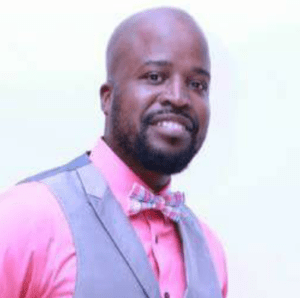By Keith Jacobs

Always look a man in the eyes. Stand up and give a firm handshake. Remember your manners. These simple yet effective rules instilled by my parents have been a pillar in my overall success. I am blessed to work in a field I love and to help raise two beautiful children who are reaping the benefits of hard work and education.
But how did this journey begin? My success is a product of how school choice provides opportunities for low-income families to escape the clutches of generational poverty.
I am the second youngest of six kids. I was raised to believe that the key to success is education. What was missing was an example of what this success looked like. Both of my parents worked three jobs, and neither of them attended college. Growing up in a low-income household in Tampa, I was not afforded the same opportunities as my peers. While they were focused on new clothes and shoes for school, I was focused on whether I was going to wear clothes that were too small, or if my brother had any clothes that he could hand down to me.
You see, education was an idea, a philosophy. It was not a tangible reward that I could see and understand given my surroundings. As a young, black male, the statistics would say I had a greater chance of being dead or in jail than graduating and going to college. I saw drugs, alcohol, and crime that plagued the streets around my middle school and wondered if there was a way to escape this reality.
Thankfully, the school choice movement that began brewing in the 1980s and ‘90s offered a lifeline: magnet schools. During this time, magnet schools were viewed as competition to traditional schools because they provided an opportunity for students to attend a school outside their neighborhood that met their individual needs.
My parents noticed my intellectual abilities but did not think they had options for me to excel in a high school. For low-income families like mine, the opportunity to attend the best schools seemed unattainable without the financial resources. There was no scholarship program that would have provided me with a quality education outside my ZIP code. This all changed with school choice.
Going into my freshman year, I applied for an International Baccalaureate (IB) program at a magnet school that was 10 miles away from my house and was accepted. This gave me a chance to experience what I would not have otherwise been exposed to in a traditional curriculum.
The thing about growing up in poverty is that even though I viewed school with the same enthusiasm as my peers, the difference laid in my ability to understand and adhere to cultural norms that were necessary to succeed in school. Poverty is a societal ill that is rectified with innovative ways to provide quality education for all students.
Today, these choices come in many forms: magnet schools, charter schools, vouchers and scholarship programs, education savings accounts, even virtual schools and micro-schools. They have proved popular with families. In Florida alone, some 1.7 million students – about 46 percent of all PreK-12 students – attend a school of choice.
Through school choice, I not only graduated from the IB program, I also was able to attend one of the most rigorous universities in the nation, the University of Florida, becoming the first college graduate in my family. It allowed me to pursue a master’s degree. Ultimately, it helped me provide a better quality of life for my children and end the cycle of poverty.
While legislators are debating who is cheating whom in education, there are millions of low-income children like I was who just want an equal chance to succeed. School choice gives them what they lack due to their economic circumstances — ownership.
Keith Jacobs is manager of the Charter School Initiative for Step Up For Students.


